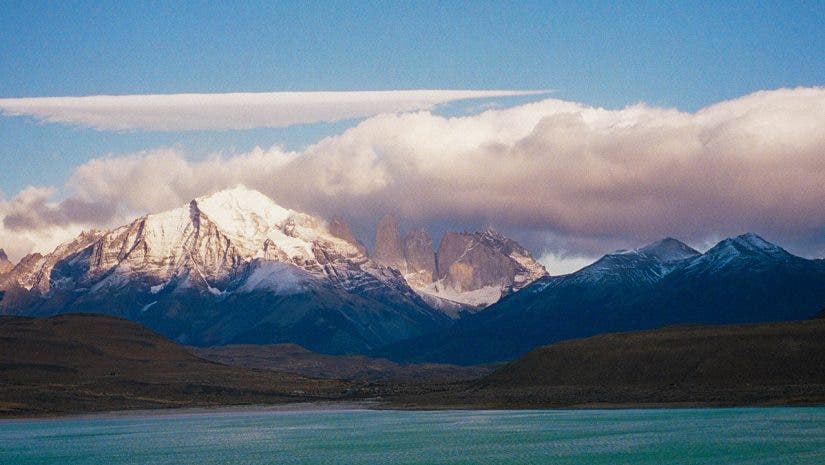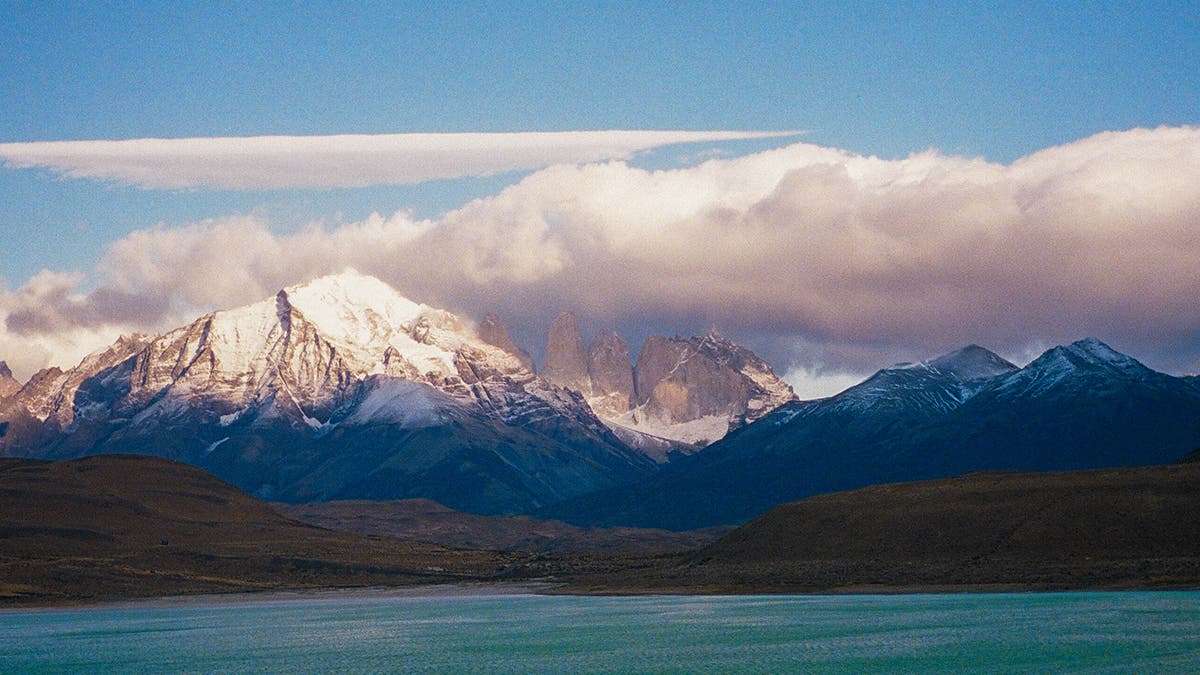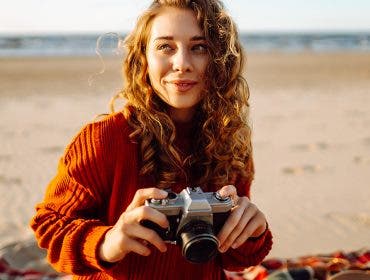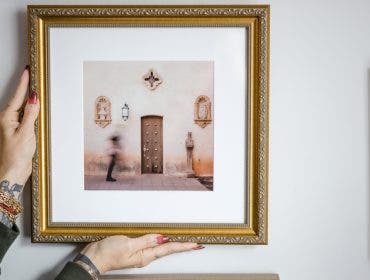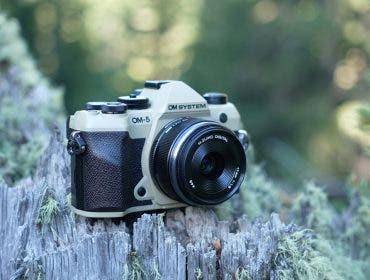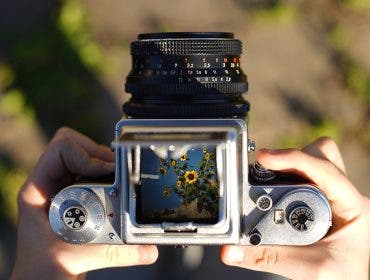I find film photography is the perfect companion for my travels. The sun was sinking slowly over Jan Thiel Beach in Curaçao, steady and unhurried. I stood by the water with my Nikon FM2, a 24mm f/2.8 lens mounted, and a roll of Kodak Ektar 100 loaded, watching, waiting. The sky was shifting by the minute—soft blues giving way to violets and tangerine, then deep amber streaked with shadows. I didn’t rush. I waited for the right moment.
Three frames were captured—each one as the sun inched lower.
In the first, the water was still dotted with swimmers and glowing under a soft pastel sky, the horizon stretching in warm pinks and lavender as golden hour began to settle in.
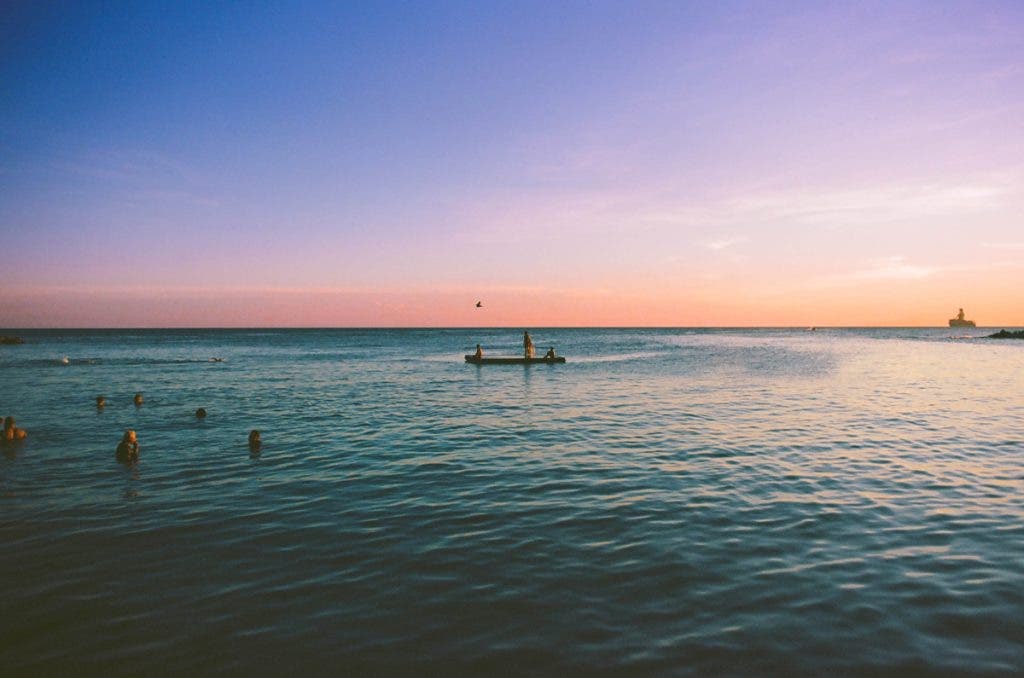
For the second, the sun hovered just above the island’s silhouette, casting a sharp beam of light across the sea, the sky deepening into rich purples and orange as shadows grew longer.
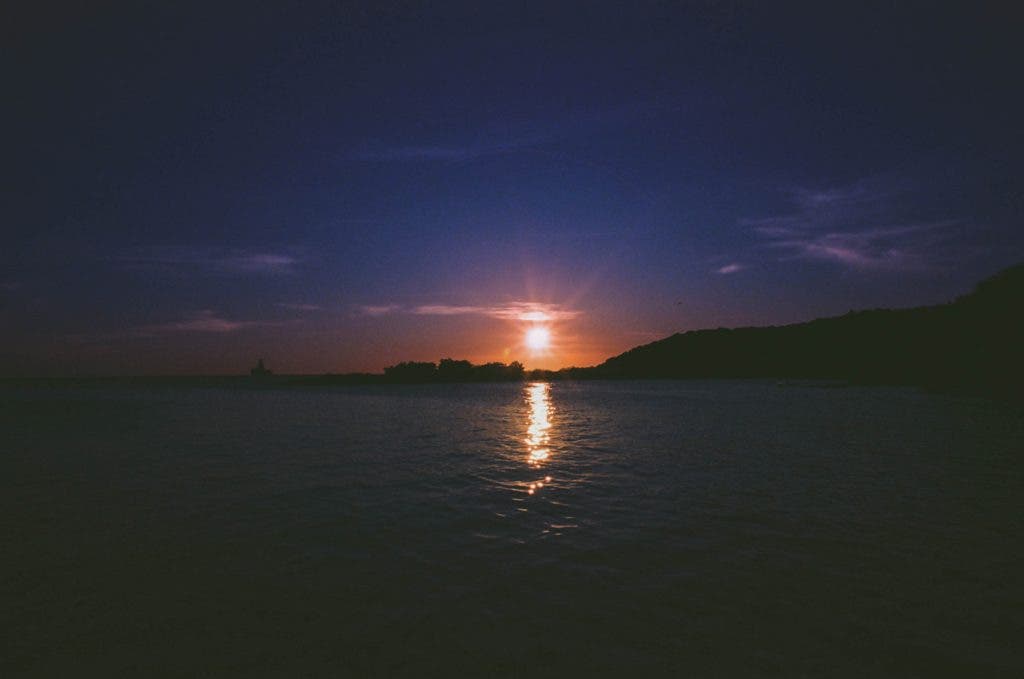
In the third, the sun had vanished completely, leaving behind a quiet, moody gradient—deep indigo melting into burnt violet, with only a faint glow lingering above the horizon.
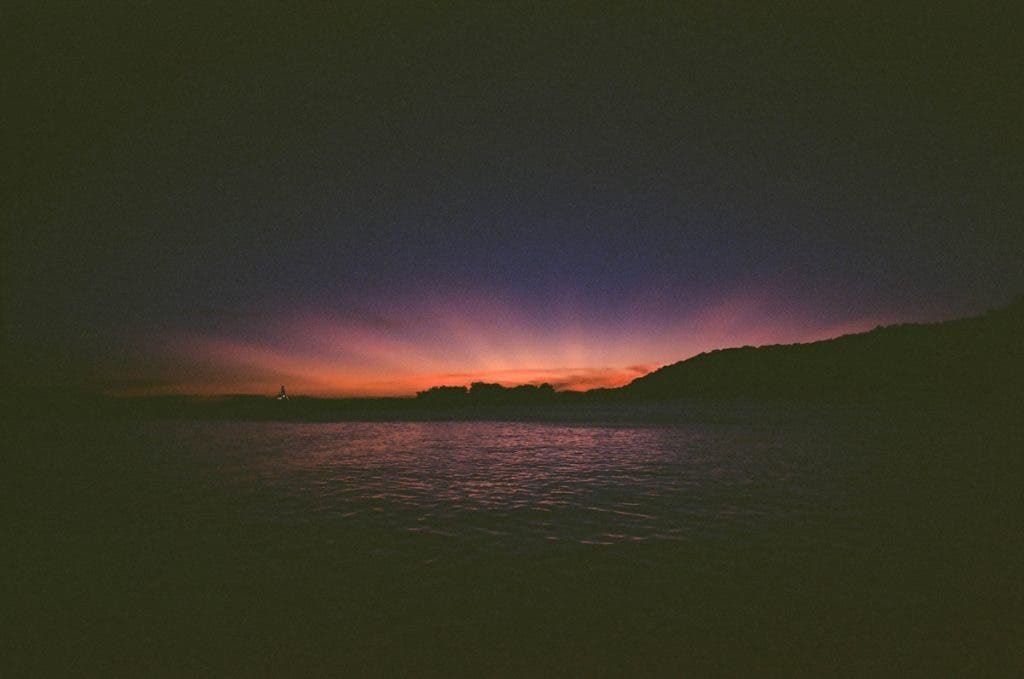
That’s the beauty of film. It encourages you to move with intention and really observe. You don’t fire off dozens of shots and choose later. Wait. Feel. Commit. With only 36 frames, every click becomes a decision, and that decision makes the image more meaningful.
Whenever I travel, whether for a project or a personal trip, I always bring a film camera along with my mirrorless camera. My mirrorless camera is great for fast-moving moments or content I need to turn around quickly. But my film camera is what I reach for when I want to capture something that feels more personal. I love not knowing whether the shot worked and the anticipation that builds while waiting for the scans.
In this piece, I’ll share some of those travel stories, offer practical tips for shooting film on the road, and highlight some of my favorite film cameras, lenses, and stocks.
Film Photography. Moments That Stay With You
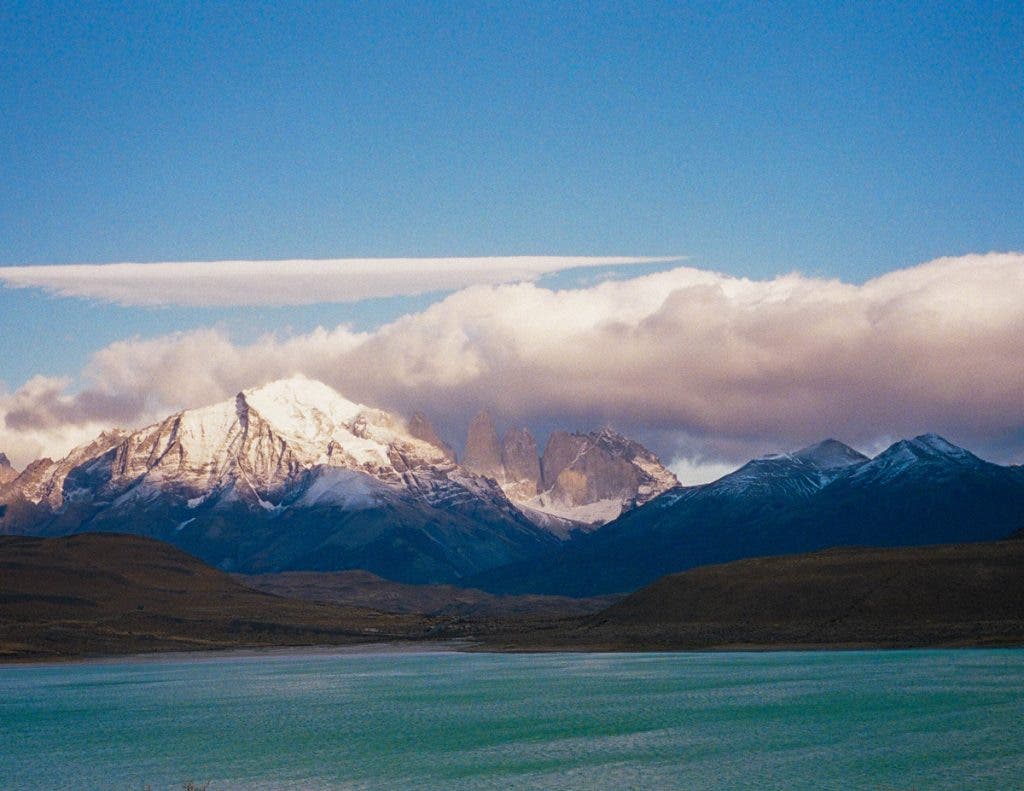
Driving into Torres del Paine National Park for the first time, I caught a perfect glimpse of the famous towers just as the clouds began to lift. I had my Contax T2 loaded with Kodak Portra 400, and I knew I had one shot. Patagonia’s weather is famously unpredictable, but that day, everything aligned. I paused, composed, and took the frame. That moment taught me something: sometimes, the best travel photos come when you stop chasing them and simply wait.
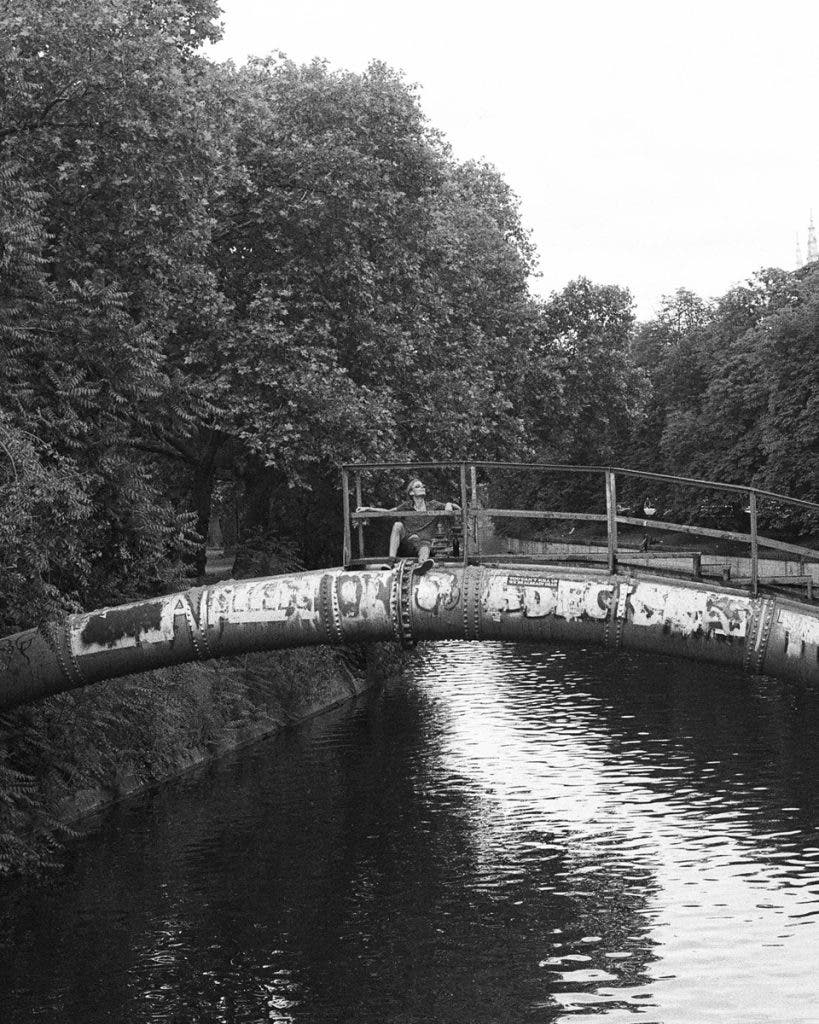
When I went to Berlin last year, I knew I wanted to capture it in black and white. There’s a certain grit and elegance to the city—its architecture, its street corners, its quiet tension between past and present—that feels more powerful without the distraction of color. I loaded my Nikon FM2 with Ilford HP5 and wandered with a 50mm lens, drawn to texture and stillness. This shot of a man sitting on a graffiti-covered bridge over a canal is a perfect example. In black and white, the image becomes less about the scene and more about the mood—timeless, raw, and distinctly Berlin.
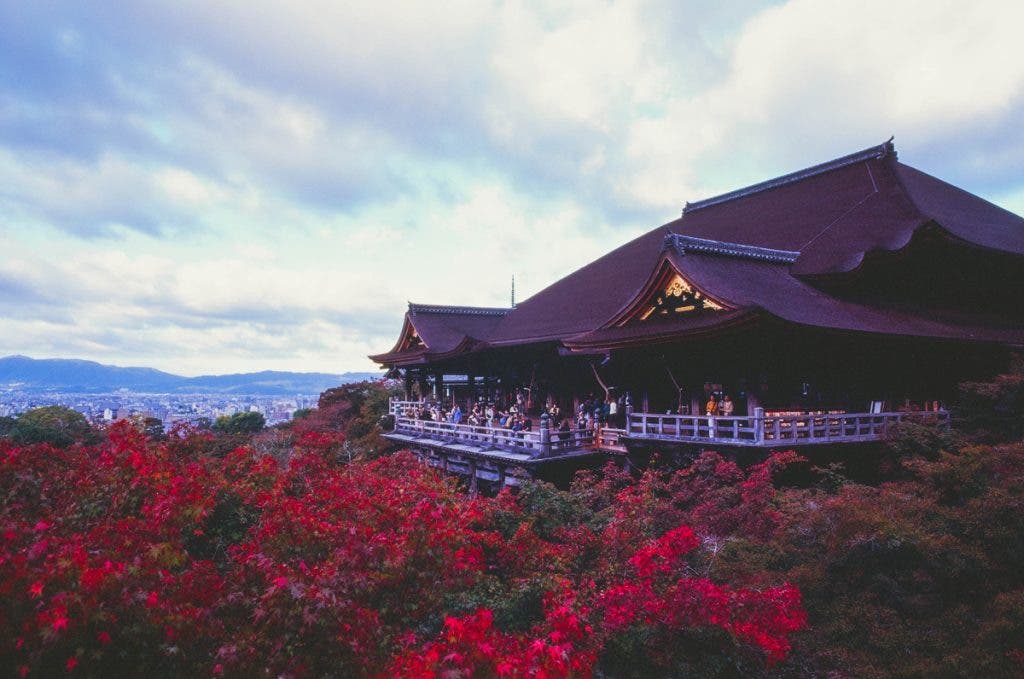
Trying a New Film Stock, a Joy of Film Photography
In Kyoto last November, during peak autumn, I made a conscious decision to try Kodak Ektachrome E100 for the first time. I wanted to capture the colors of the season. Slide film is unforgiving, but it rewards precision and patience. As I framed a shot of Kiyomizu-dera overlooking the city, I slowed down, metered carefully, and took time to compose my shot.
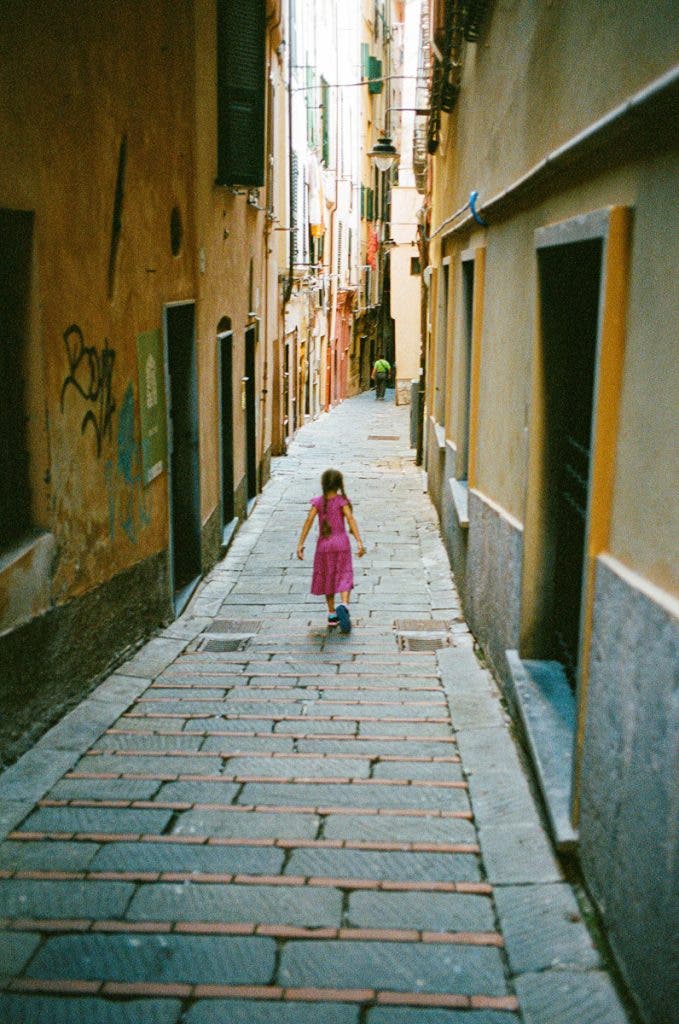
In Genova, I caught a candid moment of my friend’s daughter running ahead of us through a narrow alleyway, her movement full of joy and color. I had my Leica M6 loaded with Cinestill 800T and a 35mm f/1.4 Summilux-M lens—a fast, responsive setup ideal for fleeting moments like this.
Great Film Photography Cameras and Lenses for Travel
If you’re getting into film photography for travel, here are some trusted and accessible cameras to consider—many of which you can find here.
Olympus Trip 35
A compact zone-focus camera with a sharp 40mm f/2.8 lens and no need for batteries; perfect for travel with a vintage feel.
Pentax K1000
This was my first film camera, and it taught me everything—how to shoot in Manual, how to read light, and how to think before pressing the shutter. It’s a fully mechanical SLR that’s built like a tank, with no frills and nothing automatic—which is exactly why it’s such a great teacher. If you’re just starting out, this is the perfect camera to build your foundation.
Canon AE-1
A semi-automatic SLR that balances control and ease of use; excellent for portraits and urban scenes.
Contax T2
My go-to travel camera. Compact, fast, and sharp. I’ve used it everywhere—from hiking in Patagonia to late nights in Tokyo.
Nikon FM2
A rugged, mechanical SLR with intuitive controls; great for both street photography and landscapes.
Leica M6
A premium rangefinder with tactile precision and stunning optics, ideal for deliberate, immersive shooting.
When building your film kit, lenses matter just as much as the camera. For travel, I recommend lightweight, versatile primes like 50mm for everyday shooting and low-light portraits, 35mm for street scenes and tighter spaces, 28mm for landscapes and wide compositions, or 24mm for dramatic, immersive frames. You can find a great selection of used lenses at Adorama’s Used Lens Department.
Film Stocks to Try—and When to Use Them
Each film stock brings its own look and personality. These are my go-to’s for different moods and lighting:
Kodak Portra 400
Versatile and perfect for everything from portraits to landscapes.
Kodak Gold 200
Warm and nostalgic, with a vintage feel that shines in daylight.
Kodak Ektar 100
Bold color and fine grain make this a favorite for bright, sunlit scenes like beach towns and mountain ranges.
Cinestill 800T
Ideal for night shooting, with a cinematic glow that handles artificial lighting beautifully.
Lomography Color Negative 400
A fun, affordable film with punchy colors and high saturation; great for casual snapshots and creative experiments.
Practical Travel Tips for Film Photography
A few habits that help make traveling with film easier and more rewarding:
- Always pack more film than you think you’ll need. I usually bring five to ten rolls per week of travel.
- Don’t check your film. Airport X-rays can fog it—always carry your film in your hand luggage and ask for a hand inspection.
- Pre-load before heading out. This is especially important during golden hour—you don’t want to be loading film when the light’s perfect.
- Label your rolls. I use masking tape and a Sharpie to note the stock and location. I also keep a small notebook to track what I shot, where, and with which camera.
- Protect your film. I make sure to keep the film in the plastic canister it came with and store it in a ziplock bag. I also have a Kodak film case—it keeps things organized and safe and makes it easier to grab what I need without digging through my bag. Both options help protect the film from moisture and from getting jostled around in transit.
- Develop and Scan. My go-to film labs are Luster Photo & Digital and NYC Film Lab, and you can also use findmyfilmlab.com to find a reliable lab in your hometown. If you’re traveling for a while, consider developing abroad to avoid damage in transit.
- Want to DIY? Adorama carries everything you need to build a home darkroom—from tanks to trays to safelights.
Film Is Not Dead: The Timeless Appeal of Film Photography for Travel
Today, film photography is having a revival. Just scroll through the #filmisnotdead hashtag on Instagram, and you’ll find a global community of photographers embracing a slower way of shooting by being more thoughtful with each frame, accepting imperfections, and getting creative with limited shots and settings. What started as a niche hashtag has grown into a movement, connecting analog lovers around the world and inspiring a new generation to pick up a roll of film.
And if you’ve been thinking about trying it, there’s no better time. Whether you’re just starting out or looking to level up, Adorama and the Adorama Used Department have film cameras to help you create meaningful images wherever your travels take you. On your next road trip, hiking adventure, or city escape, consider bringing a film camera. You might see the experience in a whole new way.
